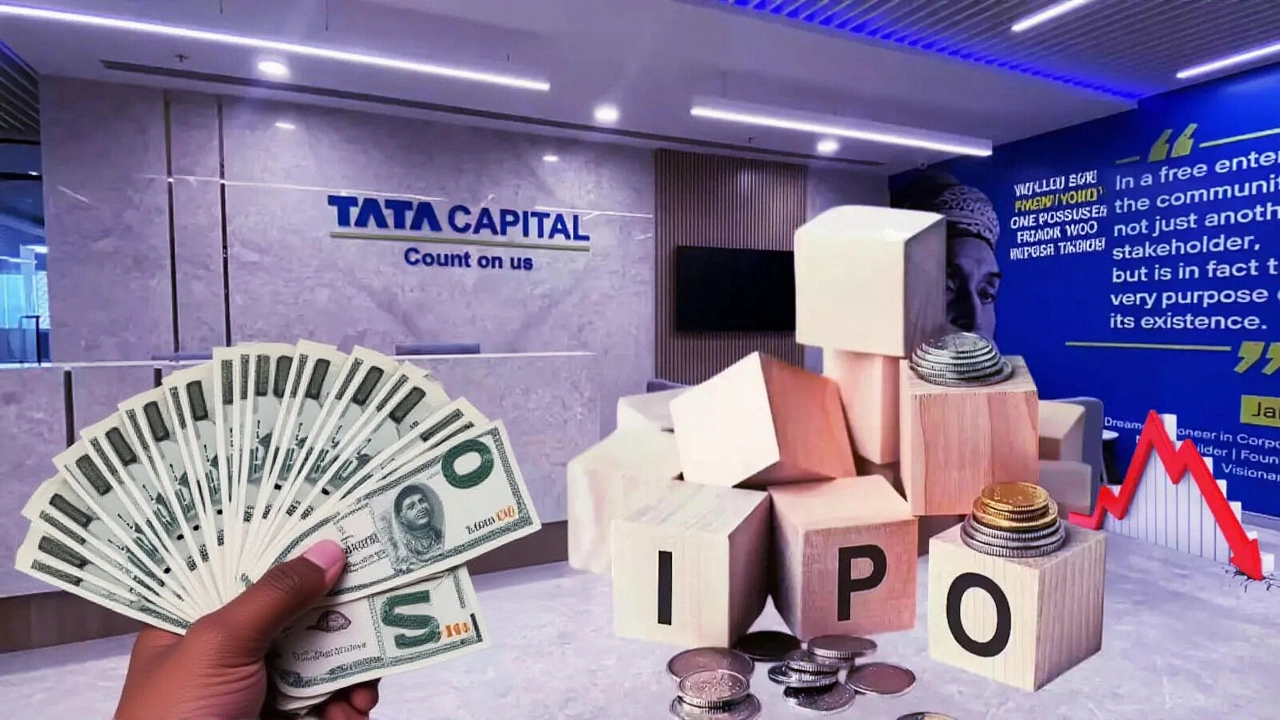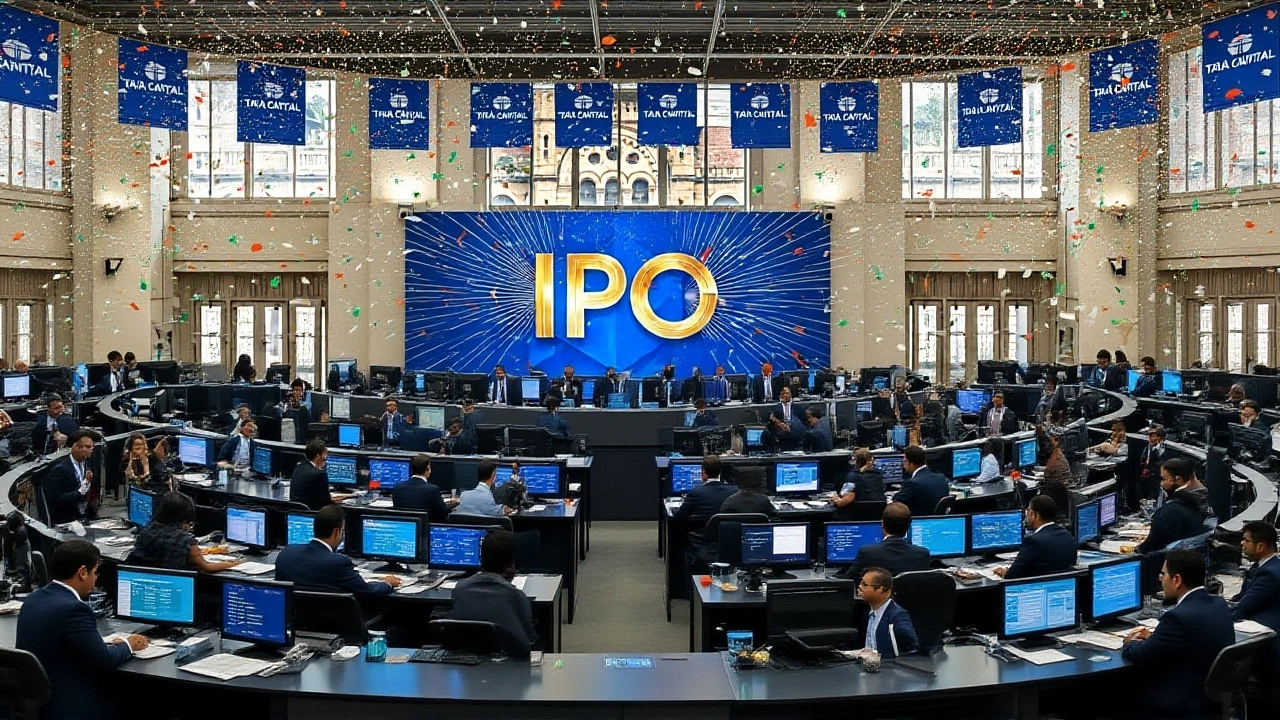When Tata Capital Limited announced that its IPO allotment finalizationMumbai was confirmed on October 9, 2025, the market took a collective breath. The shares are slated to hit the Bombay Stock Exchange and the National Stock Exchange on Monday, October 13 – a tight seven‑day window that left investors scrambling to check their allotment status.
Background: Tata Capital’s Journey to the Public Markets
Founded in 2007 as the non‑banking financial arm of the Tata Group, Tata Capital has grown into a diversified NBFC offering commercial finance, consumer loans, wealth management, and credit cards. By June 30 2025, its total gross loan book topped ₹2,334 billion, according to the Financial Express. The firm’s valuation now hovers around ₹1.31 lakh crore, making it a heavyweight ready for the next growth chapter.
IPO Details and Allocation Mechanics
The public offering comprised two strands: a fresh issue of 21 crore equity shares worth ₹6,846 crore and an offer‑for‑sale (OFS) of 26.58 crore shares amounting to ₹8,666 crore, together totaling 47.58 crore shares. The price band was set at ₹310‑₹326 per share, with a minimum bid lot of 46 shares (₹14,996 at the top of the band). Investors placed bids between October 6 and October 8, 2025, and the allotment was sealed on October 9.
- Fresh issue: 21 crore shares, ₹6,846 crore
- OFS by promoters: 26.58 crore shares, ₹8,666 crore
- Price band: ₹310‑₹326
- Listing date: October 13, 2025
- Grey market premium (GMP) on Oct 9: just over 1 % above issue price
Prominent sellers in the OFS were Tata Sons Limited and the International Finance Corporation (IFC). The proceeds from the fresh issue will bolster Tata Capital’s Tier‑I capital, helping meet future capital adequacy norms and fund onward lending.
Market Reaction and Grey Market Premium
Grey market data, sourced from Investorgain, showed the GMP slipping from a brisk 4 % on the opening day (Oct 6) to a modest 1 % by Oct 9. That dip reflects typical settling after the initial hype, but the fact that the premium stayed positive signals continued investor appetite.
Refunds are scheduled for October 10, and the shares will be credited to demat accounts the same day, according to the timeline shared by Zerodha. Anchor investors face lock‑in periods ending November 8, 2025 (50 % of their holding) and January 7, 2026 (the remaining half).

Analyst Views: Valuation, Strengths, and Weaknesses
Choice Broking’s research note, quoted by the Financial Express, placed the issue at an adjusted price‑to‑book (P/B) multiple of 3.6 × at the upper band – broadly in line with peers and therefore “fully priced.” The brokerage highlighted a steady rise in interest income, driven by the expanding loan book and a widening branch network.
However, the note warned that Tata Capital’s Return on Equity (RoE) and Return on Assets (RoA) trail many competitors, a gap that could weigh on valuation multiples if not addressed. On the upside, the company enjoys the Tata brand’s clout and is slated for a merger with Tata Motors Finance, a move that would deepen its customer base and cross‑sell opportunities.
In the words of Natarajan Chandrasekaran, Chairman of Tata Sons Limited, “the IPO is a strategic step to unlock capital for scaling, while the brand’s trust remains a powerful catalyst for growth.”
Future Outlook: Opportunities and Risks
Post‑listing, Tata Capital will likely channel fresh capital into expanding its consumer loan portfolio, especially in underserved tier‑2 and tier‑3 cities where demand for affordable credit remains high. The merger with Tata Motors Finance could also create a one‑stop shop for vehicle financing, leveraging the group’s automotive footprint.
Key risks include heightened competition from fintech players, potential regulatory tightening on NBFC capital requirements, and the lingering gap in profitability ratios. If the RoE gap narrows, the company could command higher multiples in subsequent funding rounds.

What Investors Should Do Next
Retail investors can verify their allotment status on the registrar’s portal or the NSE/BSE websites. Those who received an allotment should watch the opening price on October 13 – the GMP suggests a modest premium, but market dynamics on listing day can swing both ways. Long‑term investors might consider holding the stock to benefit from the brand’s growth narrative and the upcoming merger, while short‑term traders could eye the volatility that typically accompanies first‑day trading.
Frequently Asked Questions
How does the Tata Capital IPO affect retail investors?
Retail investors who secured an allotment will see their shares credited on October 10, with refunds processed the same day for any unfilled bids. The modest grey‑market premium suggests a gentle price uplift, but first‑day volatility could present trading opportunities. Holding the stock could benefit from the company’s expansion plans and the Tata brand’s credibility.
What are the main uses of the IPO proceeds?
The ₹6,846 crore raised through the fresh issue will be routed to Tata Capital’s Tier‑I capital, strengthening its regulatory capital base. This will enable the NBFC to fund additional loan disbursements, expand its branch network, and meet upcoming capital adequacy requirements. The OFS proceeds go to selling shareholders – primarily Tata Sons and IFC.
When can investors expect the lock‑in period to end?
Anchor investors face a staggered lock‑in: 50 % of their holdings unlock on November 8, 2025, and the remaining 50 % on January 7, 2026. These dates are 30 and 90 days, respectively, after the October 9 allotment.
What does the merger with Tata Motors Finance mean for the business?
The pending merger is expected to broaden Tata Capital’s customer base by adding vehicle‑finance borrowers from Tata Motors Finance. It should create cross‑selling synergies across personal, commercial, and automotive loans, potentially boosting loan book growth and improving economies of scale.
How does Tata Capital’s valuation compare with peers?
At the upper price band, the adjusted price‑to‑book ratio is about 3.6 ×, which aligns closely with other leading NBFCs such as Bajaj Finance and Mahindra & Mahindra Financial Services. This suggests the stock is neither overly cheap nor excessively rich, positioning it as a fairly priced entry for investors.

